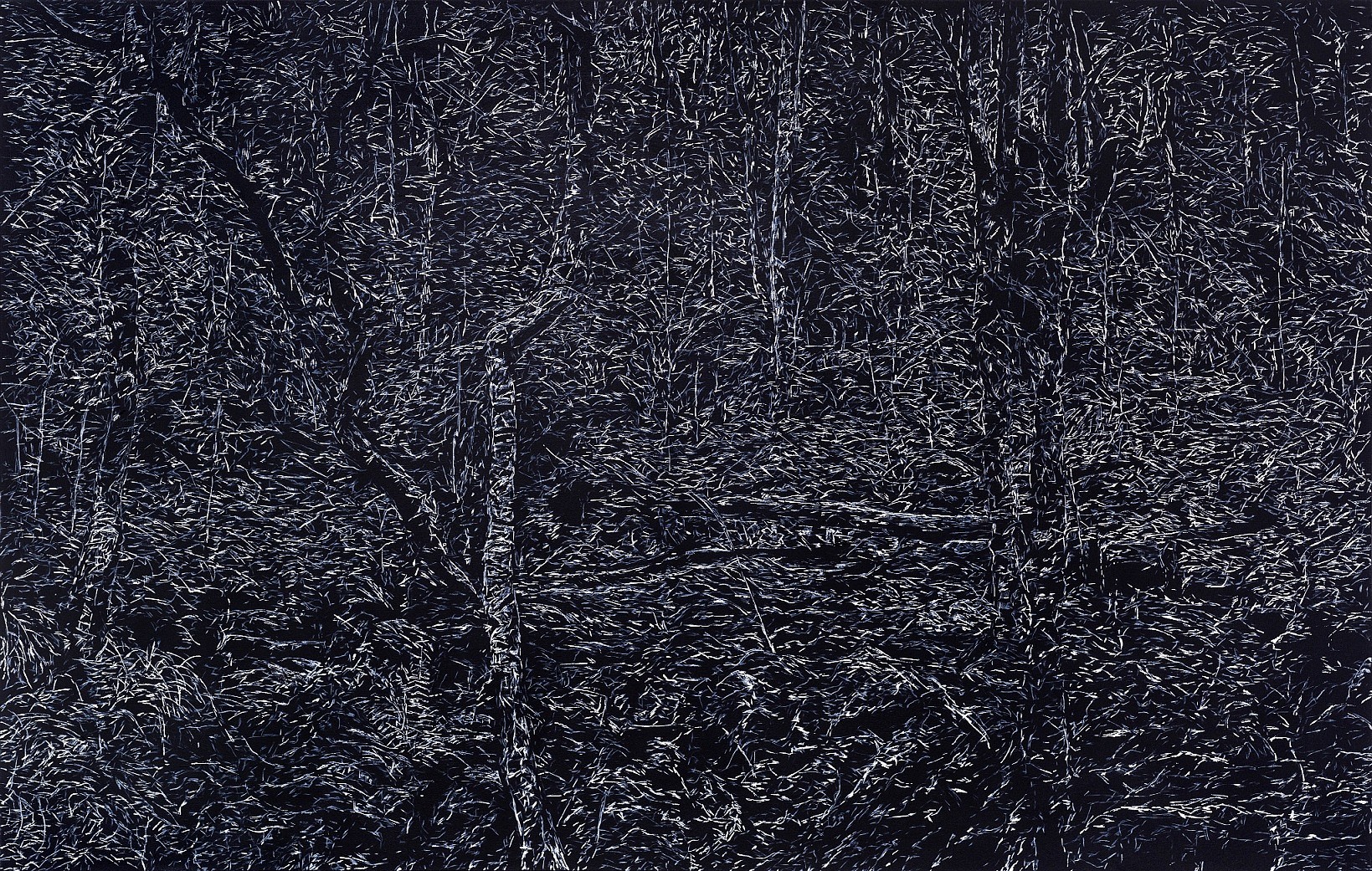PRESS RELEASE

JORDAN SWEKE: The Eternal Death
Feb 28 – Mar 18, 2018
Everard Read Cape Town is pleased to present the solo presentation The Eternal Death by Jordan Sweke. This is the artist’s first solo exhibition with the Cape Town gallery. Opening the 28th February, it will run across both floors until the 17th March.
Click here to request a portfolio
"The most important principle of environment is that you are not the only element." Mahavira
It is easy upon first reflection to review Jordan Sweke’s practice as an archetypical duality of realism vs abstraction. Sweke creates visual manifestations that stretch from detailed abstraction, into cellular binaries and through into formal landscapes. One can often be compelled to explore this variety as simply deliberate contradictions. On the one hand, we observe organic forests, trees, sky or the sea and then when we approach closer to investigate surface details, these quickly become a dissolved and broken geometry – like pure gesture, with pattern and coded formula.
These contrasts of positive and negative spaces, lightness versus darkness, chaos versus order, seem to evoke opposing narratives. However, by the artist’s own account, the combinations of the contrasts converge into a third thread, a ‘space’ which is not so much ‘abstracted’ or ‘realistic’ or ‘micro’ or ‘macro’ but rather an in-between that the audience inhabits as they engage with the artworks.
Thus, as the audience, we begin to investigate our relationship with Sweke’s narrative and how it relates to us. It is clear the artist has manipulated imagery through distillation. There is a morphing of nature to focus the very strong desire for us to question our relationship with and impact on the natural world. Sweke explains that the natural settings rendered are heavy with impact and effect – many are colonial locations where foreign planting of alien species occurred simultaneously to a removal of local indigenous fauna. The viewer then rests in a limbo – between these various states of abstraction and reality. In turn, there is questioning of how we consider ourselves in these narratives.
This pondering serves the artist’s bigger ambitions – to allow these feelings and considerations to act as a metaphor for our actions and effects within the physical world. Indeed, there is not just a prompt for us to see details and expanses in the imagery, or to recognize the reforming of ‘positive’ or ‘negative’ space. For Sweke, by constructing this third layer of experience, there is an acknowledgment of our role in this story. This is a role that he feels is both crucial and effecting but equally that which has perhaps no real positive effect. Titles such as ‘Do we serve the earth as it serves us’, or ‘Are we not custodians?’ actively ponder accountability, asking us to consider fundamentally ‘What is our role in the natural world?’
The 2018 sculptural Kiaat artwork The Eternal Death, exemplifies this questioning narrative and dualities present in Sweke’s working practice. A human figure (based on the artist himself) has been scanned with 3-dimensional software and then rendered in wood with a machine-arm router. Though a finished process, certain sections remain intact showing the digital printing machine cuts. There are other sections, that have been deliberately finished to a smooth surface by hand. The figure holds a machete and the layers on the bottom half of the artwork suggest a hacking and cutting by such an instrument.
Conclusions arise of perhaps the figure cutting himself away from this solid wooden form. Equally, this serves as a comment for the artist on the destruction of natural environments by human hands. In both instances, Sweke uses this sculpture as a ‘third space’ and a bridging. There is a combination of natural materiality and digital process as well as of realism and abstracted pixilation and these all conclude to catapult the audience from omniscient observer to face head on their actions, their effects, and our place within nature and the whole world around us.
*Images courtesy of Michael Hall



